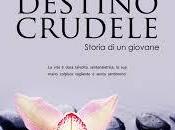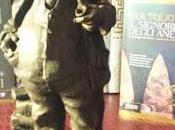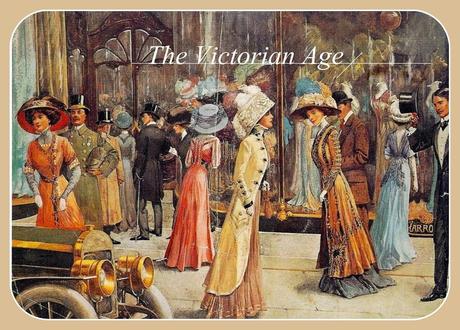
Data la simpatia che ha riscosso presso di voi il post pubblicato nel mese di giugno in cui trattai delle curiosità che appartenevano all'epoca vittoriana, come promesso allora ho pensato di proporne altre, nella speranza che le troviate altrettanto interessanti e ... curiose !
☞ Era l'anno 1849 quando in Inghilterra venne emessa una moneta cui venne dato il soprannome di 'fiorino senza Grazia' ‘Graceless Florin’ ovvero ‘Godless Florin’ fiorino senza Dio', questo perché, a differenza di tutte le monete precedenti, non recava le iscrizioni tradizionali DG (Dei Gratia - per Grazia di Dio) e FD (Defensor Fidei - Difensore della Fede). Proprio quell'anno una violenta epidemia di colera virulenta colpì gli abitanti del regno di Victoria e subito la causa venne individuata nel 'Godless Florin', motivo per cui la moneta venne sollecitamente ritirata dalla circolazione.
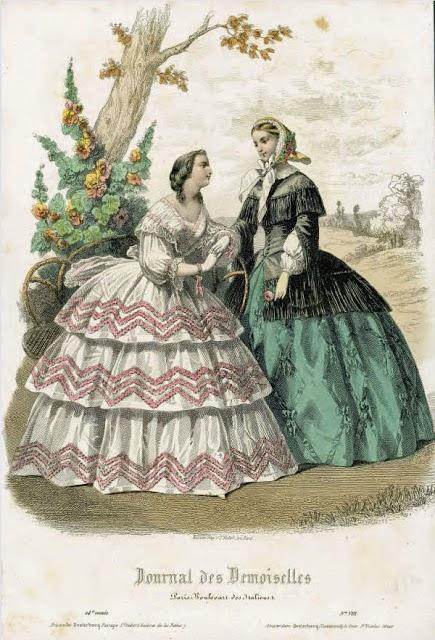
☞ Nel XIX° secolo il colore verde era estremamente in voga. I coloranti con cui si otteneva questo colore, applicati a mobili e tessuti per abiti, soprattutto per signora, contenevano quasi sempre una grande quantità di arsenico, ecco perchè molte persone sono al tempo decedute inalando inconsapevolmente il veleno dai loro arredi per la casa o assorbendolo per tramite dell'epidermide dai loro indumenti.
☞ Quando i dentisti, nel 1850, iniziarono ad utilizzare gli anestetici, molte persone decisero di farsi togliere tutti i denti in una volta, per evitare d'incorrere nella necessità di recarsi ancora dal dentista, e di sostituirli con protesi note con il nome di 'Waterloo Teeth', i "Denti di Waterloo": dopo la battaglia di Waterloo nel 1815, infatti, alcuni approfittatori passarono tra i corpi dei soldati deceduti per estrarre loro i denti che venivano poi fissati in mascelle di osso intagliato e venduti in Inghilterra come protesi.
Durante la prima metà del XIX secolo, perciò il modo più popolare e redditizio per avere una protesi dentaria era quello di procurarsene una con denti veri, ma di seconda mano. I così detti "Waterloo Teeth" - un soprannome che è diventato rapidamente applicabile a qualsiasi insieme di denti rubacchiati dalla bocca di un soldato morto, secondo un'usanza che proseguì per la durata delle guerre civili di Crimea e americana - sono stati di gran lunga preferibili a quelli più comunemente utilizzati nel Settecento, quando erano spesso acquistati da criminali giustiziati, da corpi riesumati, dai pazienti dei dentisti e persino dagli animali ed erano di conseguenza spesso non sani, usurati o intaccati dalla sifilide. La prospettiva di una sovrabbondanza di giovani che prendevano parte ai conflitti, con denti sani, rappresentava, probabilmente, il sogno di ogni dentista del tempo !
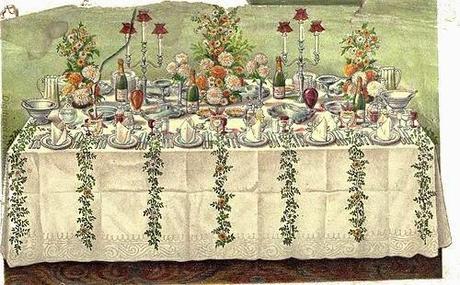
Tavolo apparecchiato per buffet in sala da ballo o per un party serale, Mrs Beeton's Book☞ Durante il 1800 l'ananas era considerato un frutto decisamente alla moda. Solo le persone più facoltose potevano permettersi di farle crescere nelle loro 'greenhouses' seguite con estreme attenzioni da giardinieri specializzati; presentare un'ananas come parte della decorazione su di un tavolo da pranzo era esibizione sorprendente di ricchezza e di status sociale al punto che molte famiglie prendevano in prestito gli ananas provenienti da altre case rurali al fine di impressionare i loro ospiti in occasioni speciali.
☞ Pensate che quando Arthur Conan Doyle pubblicò nel 1893 il racconto 'The Final Problem' in cui il suo eroe Sherlock Holmes perse al fine la vita le persone vestirono fasce a lutto ed abiti scuri in segno di cordoglio tanto erano convinti che questo suo personaggio fosse reale.
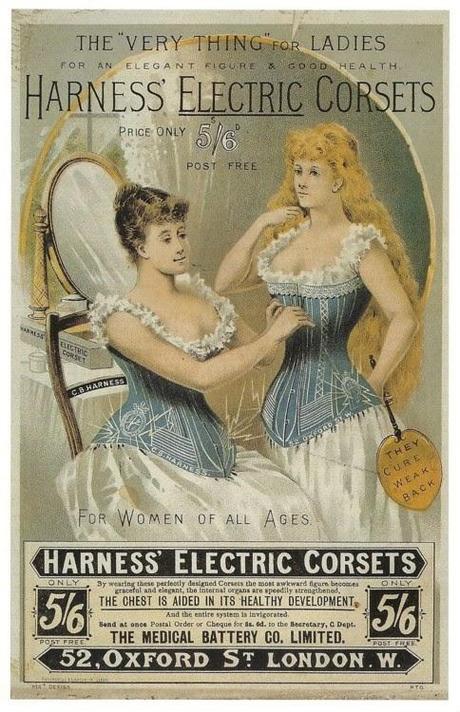 ☞ Molti produttori approfittarono dell'erronea convinzione diffusa appena si conobbe l'elettricità secondo cui essa avesse magici poteri curativi. Il Corsetto Elettrico, inventato dal dr.Scott, perciò, avrebbe dovuto curare le donne con problemi alla schiena ed aiutare il petto nel suo sano sviluppo; venduto da Cornelius Bennett Harness, titolare dell' Ammoniaphone il cui principale prodotto era la cintura 'electropathic' che conteneva lastre di zinco e rame che si supponeva generassero una corrente salutare, forse più che elettrico andava definito magnetico poichè era dotato di due piastre di acciaio magnetizzato (le stecche sul davanti che si agganciano insieme per chiuderlo). Harness fu inizialmente un distributore per la famosa invenzione americana del dottor Scott, mentre dal 1891 cominciò con il vendere la propria versione negli opulenti locali della lussuosa Oxford Street.
☞ Molti produttori approfittarono dell'erronea convinzione diffusa appena si conobbe l'elettricità secondo cui essa avesse magici poteri curativi. Il Corsetto Elettrico, inventato dal dr.Scott, perciò, avrebbe dovuto curare le donne con problemi alla schiena ed aiutare il petto nel suo sano sviluppo; venduto da Cornelius Bennett Harness, titolare dell' Ammoniaphone il cui principale prodotto era la cintura 'electropathic' che conteneva lastre di zinco e rame che si supponeva generassero una corrente salutare, forse più che elettrico andava definito magnetico poichè era dotato di due piastre di acciaio magnetizzato (le stecche sul davanti che si agganciano insieme per chiuderlo). Harness fu inizialmente un distributore per la famosa invenzione americana del dottor Scott, mentre dal 1891 cominciò con il vendere la propria versione negli opulenti locali della lussuosa Oxford Street.☞ I primi fiammiferi ad essere inventati avevano la testa fatta di una sostanza chiamata fosforo bianco, il cui processo di produzione procurava agli operai che vi erano addetti una malattia nota come 'phossy jaw' ovvero 'Mascella fosforosa': il contatto prolungato con il fosforo bianco causava ascessi gravi tra denti e gengiva prima di condurre a complicazioni fatali. Questo fu uno dei principali fattori che mossero lo sciopero del 1888 delle 'ragazze dei fiammiferi' a Londra che fortunatamente portò a migliori condizioni per i lavoratori della fabbrica ed, infine, il divieto dell'utilizzo del fosforo bianco nella produzione dei fiammiferi.
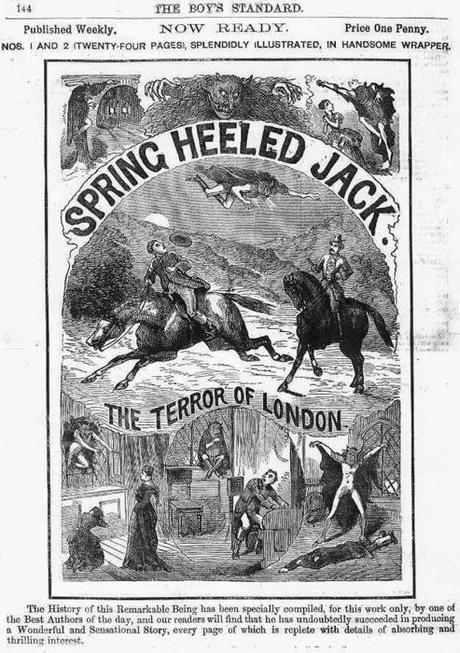 ☞ Durante il novembre del 1888 la disperazione della polizia metropolitana di Londra incapace di catturare il killer noto come Jack lo Squartatore condusse gli agenti a chiedere l'aiuto delle prostitute dell'East End. In cambio dell'immunità all'arresto queste donne avrebbero dovuto esercitare il loro mestiere, pur essendo sorvegliate da agenti di polizia mascherati, normalmente accettando di prestarsi anche ad accondiscendere gli uomini più sospettosi, agendo quindi come esca per intrappolare l'assassino. Tuttavia al tempo gli omicidi erano già cessati e l'identità dello Squartatore rimane tutt'oggi un mistero.
☞ Durante il novembre del 1888 la disperazione della polizia metropolitana di Londra incapace di catturare il killer noto come Jack lo Squartatore condusse gli agenti a chiedere l'aiuto delle prostitute dell'East End. In cambio dell'immunità all'arresto queste donne avrebbero dovuto esercitare il loro mestiere, pur essendo sorvegliate da agenti di polizia mascherati, normalmente accettando di prestarsi anche ad accondiscendere gli uomini più sospettosi, agendo quindi come esca per intrappolare l'assassino. Tuttavia al tempo gli omicidi erano già cessati e l'identità dello Squartatore rimane tutt'oggi un mistero.☞ Il nome femminile più popolare in Gran Bretagna tra il 1887 e il 1891 era Annie, ispirato dalla abile pistolera Annie Oakley che fece al tempo il giro del paese quale partecipe del Wild West Show di Buffalo Bill.
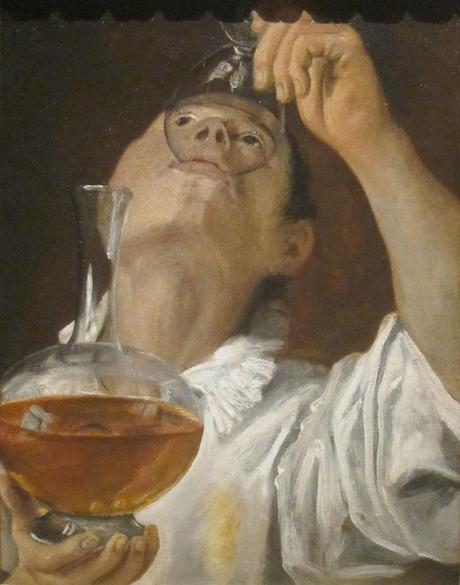
Boy Drinking by Annibale Carracci, 1582–83☞ Essendo nel XIX°secolo la maggior parte delle fonti di acqua contaminate la gente preferì bere alcolici; il gin era particolarmente popolare e già nel tardo '700 una casa su quattro a Londra possedeva una propria distilleria. Per tutto il 19 ° secolo, le famiglie povere avrebbero continuato a produrre il proprio gin, estremamente pericoloso, utilizzato per tutta la famiglia, soprattutto per i bambini piccoli, al fine di tenerli tranquilli, con conseguenze che spesso si rivelavano fatali.
☞ Collezionare e studiare insetti era uno dei passatempi più popolari per gli uomini nel periodo vittoriano, le farfalle ed i coleotteri erano particolarmente apprezzati e molti strumenti vennero ideati per catturarli, conservarli e visualizzarli al meglio. La società che conquistò il mercato nella fornitura di queste apparecchiature fu la Watkins e Doncaster, fondata nel 1874; Arthur Doncaster, uno dei suoi fondatori che aveva il suo negozio nel The Strand a Londra, era sordomuto e dialogava leggendo e scrivendo messaggi su di una lavagnetta che, quando non veniva passata tra lui ed i suoi clienti, teneva appesa al collo. Dopo aver condotto studi appassionati divenne un'autorità conosciuta a livello mondiale in quanto a competenza sulle farfalle tropicali e spesso lavorò come consulente per il British Museum.
Non sempre la storia offre spunti idillici, ma vi avevo promesso un post curioso, che andava letto con interesse storico, poichè anche se non lontanissima da noi l'epoca vittoriana ancora ignorava molto di quanto conosciamo noi oggi sia in campo scientifico che in quello tecnologico, ecco perchè molto spesso ciò che non è poetico appartiene comunque al nostro passato e diventa quasi doveroso prenderne coscienza visto che è stata la condizione necessaria per raggiungere gli odierni traguardi in quanto a progresso.
Detto questo vi lascio augurandovi con tutto il mio affetto il meglio per questi giorni che ci separano dal nostro prossimo incontro.
Che la gioia sia con voi, carissimi amici miei,
a presto ♥
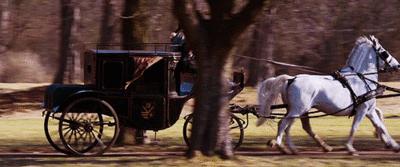

 Per chi di voi ancora non avesse letto le curiosità vittoriane già pubblicate da 'My little old world':
Per chi di voi ancora non avesse letto le curiosità vittoriane già pubblicate da 'My little old world':http://sweetlydreamingofthepast.blogspot.it/2014/06/curiosita-vittoriane.html
Testi liberamente attinti da:
http://victorianfanguide.tumblr.com/
 Victorian Age curiosities II
Victorian Age curiosities II- picture 1
Given the sympathy which the post I published in June in which I treated curiosities that belonged to the Victorian era has found in you, as promised then I thought of proposing some others , in the hope that you find them as interesting and .... curious as them !
☞ It was the year 1849 when in England was issued a coin to which was given the nickname of 'Graceless Florin' or 'Godless Florin' because unlike all the previous ones, it didn't have the traditional inscription DG (Dei Gratia - by the grace of God) and FD (Fidei Defensor - Defender of the Faith). That year a violent virulent cholera epidemic struck the inhabitants of Victoria's reign, and immediately the cause was identified in the 'Godless Florin', that's why the money was promptly withdrawn from circulation.
- picture 2
☞ In the nineteenth century the color green was extremely popular. The dyes with which this color was obtained, applied to furniture and fabrics for clothing, especially for lady, almost always contained a large amount of arsenic, that's the reason why many people have died, at the time, inhaling unknowingly the poison from their home furnishings or absorbing it through their epidermids from their fashionable clothing.
☞ When in 1850 dentists began to use anesthetics, many people decided to remove all their teeth at once, to avoid the need to go to the dentist again, and replace them with implants known by the name of 'Waterloo Teeth': after the Battle of Waterloo in 1815, in fact, some profiteers passed in the fields of battle among the bodies of deceased soldiers to extract their teeth, which were then fixed in jaw of carved bone and sold in England as prosthesis.
During the first half of the XIXth, so, the most popular and profitable way to have a dental prosthesis was to get one with real teeth, but of second hand. The so-called "Waterloo Teeth" - a nickname that has quickly become applicable to any set of teeth pilfered from the mouth of a dead soldier, according to a custom that continued for the duration of the civil wars in Crimea and in America - were far preferable to the more commonly used in the XVIIIth, when they were often purchased from executed criminals, from the bodies exhumed of patients of dentists and even by animals and were therefore often unhealthy, worn or nicked by syphilis. The prospect of a glut of young people who took part in the conflict, with healthy teeth, was probably the dream of every dentist of that time!
- picture 3 - A SUPPER BUFFET FOR BALL ROOM OR EVENING PARTY, Mrs Beeton's Book
☞ During the 1800s, the ananas fruit was considered extremely fashionable. Only the most wealthy people could afford to grow them in their 'greenhouses' followed with extreme care by skilled gardeners; an anans presented as part of the decoration of a dining table was an amazing exhibition of wealth and social status to the point that many families borrowed pineapples from other rural homes, in order to impress their guests on special occasions.
☞ You have to know that when Arthur Conan Doyle published in 1893 the story 'The Final Problem' in which his hero Sherlock Holmes lost his life, lots of people dressed mourning bands and dresses so much they were convinced that his character was real.
- picture 4
☞ Many manufacturers took advantage of the erroneous belief that was widespread when electricity was known as first according to which it had magical healing powers. The Electric Corset, invented by Dr. Scott, therefore, would have to treat women with back problems and help the healthy development of their 'chest'; sold by Cornelius Bennett Harness, owner of 'Ammoniaphone whose main product was the 'electropathic' belt which contained plates of zinc and copper to generate a current that was supposed to be healty, maybe that was better to define it magnetic instead of electric as it was equipped with two megnetized steel plates (the slats on the front that snap together to close it ). Harness was initially a distributor for the famous American invention of Dr. Scott, while in 1891 he began with selling his own version in the opulent rooms of the luxurious Oxford Street.
☞ The first matches to be invented had their heads made of a substance called white phosphorus, whose manufacturing process procured the workers who were assigned a disease known as 'phossy jaw': the prolonged contact with the white phosphorus caused serious abscesses between the teeth and gums before leading to fatal complications. This was one of the main factors that moved the strike of 1888, promoted by the 'girls of the matches' in London, which fortunately led to better conditions for factory workers and, finally, the prohibition of the use of white phosphorus in the manufacture of matches.
- picture 5
☞ During November of 1888, the desperation of the London Metropolitan Police unable to capture the killer known as Jack the Ripper led agents to ask for the help of the East End prostitutes: in exchange for immunity these women had ply their trade as usual, while being guarded by masked police officers, by agreeing to even the most suspicious men, thus acting as bait to trap the murderess. However, at the time, the murders had already ceased and the identity of the Ripper is still a mystery.
☞ The most popular female name in Great Britain between 1887 and 1891 was Annie, inspired by the skilled gunslinger Annie Oakley who made, at the time, the tour around the whole country as protagonist in the Buffalo Bill's Wild West Show.
- picture 6 - Boy Drinking by Annibale Carracci, 1582–83
☞ Being in the XIXth century most of the water sources contaminated people preferred to drink alcohol; gin was popular especially in the late '700 when already a house on four in London had its own distillery. Throughout the 19th century, poor families would continue to produce their own gin, extremely dangerous, which was used for the whole family, especially for young children, in order to keep them quiet, with consequences that often revealed fatal.
☞ Collecting and studying insects was one of the most popular pastimes for men in the Victorian period, butterflies and beetles were particularly popular, and many instruments were designed to capture, store and display them at their best. The company that conquered the market in the supply of these devices was the Watkins and Doncaster, founded in 1874; Arthur Doncaster, one of its founders who had his shop in The Strand in London, was deaf and dumb and dialogued reading and writing messages on a slate which, when wasn't passed between him and his customers, he kept hanging at his neck. After conducting passionate studies he became an authority known in the world in terms of expertise on tropical butterflies and often worked as a consultant to the British Museum.
Not always history offers idyllic insights, but I promised you a curious written, that had to be read with historical interest, as even if not very far from us, in the Victorian era we they didnn't know much of what we know today both in science and in technology , that's why very often what is not poetic, however, belongs to our past and becomes almost a duty for us to know it, for that was the necessary condition for achieving the goals of today in terms of progress.
And after saying this I leave you wishing with all my affection all the best for these days that separate us from our next meeting.
May the joy be with you, my dearest friends,
see you soon ♥
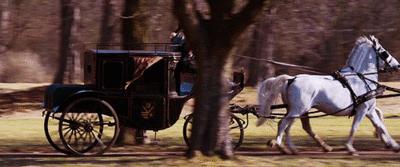

 For those of you who still haven't read the Victorian Age curiosities already published by 'My little old world':http://sweetlydreamingofthepast.blogspot.it/2014/06/curiosita-vittoriane.html
For those of you who still haven't read the Victorian Age curiosities already published by 'My little old world':http://sweetlydreamingofthepast.blogspot.it/2014/06/curiosita-vittoriane.html Source:
http://victorianfanguide.tumblr.com/
